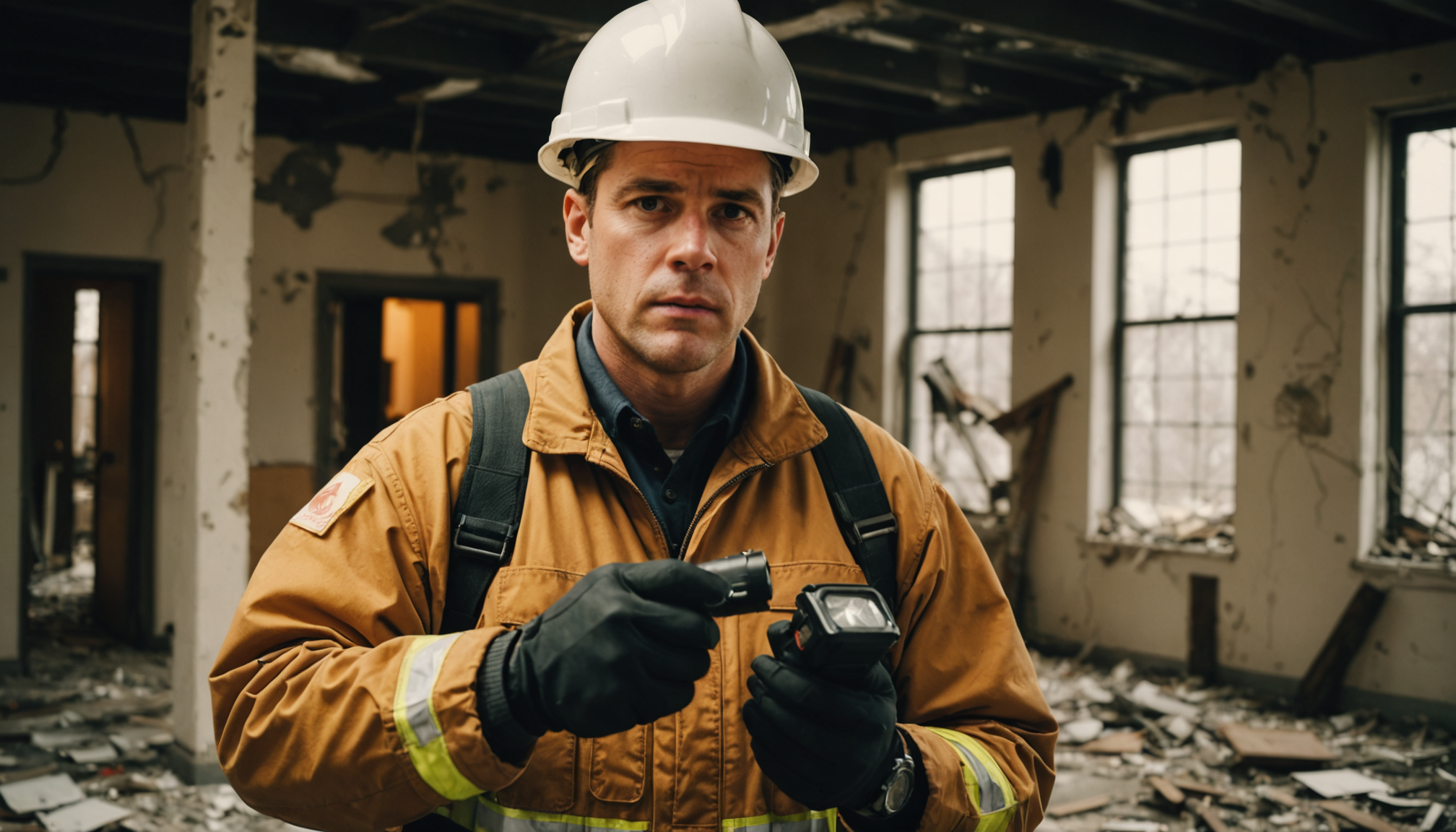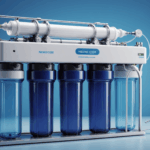When it comes to dealing with the aftermath of a disaster, whether it’s a flood, fire, or severe storm damage, the intricacies involved in cleanup and restoration can be overwhelming for those without the necessary expertise and experience. Engaging a professional disaster cleanup service provides the assurance that seasoned experts, who are adept in handling such situations, will manage your recovery process.
Professionals in the disaster cleanup field have honed their skills through years of experience. This experience is critical in effectively assessing the extent of the damage and implementing the most efficient strategies for restoration. Their vast knowledge helps in quickly identifying hidden issues that may not be immediately apparent to an untrained eye, such as water seeping into the building structure leading to mold growth, or the hazardous residues left after a fire has been extinguished.
Moreover, these experts are often certified by industry-recognized bodies, which underscores their commitment to maintaining high standards of service and their dedication to continuous learning to stay updated with the latest industry protocols. Certification programs ensure that these professionals understand the complexities of various types of disasters and can apply the right techniques to ensure a safe and thorough cleanup.
The table below highlights the comparison between relying on professional services and attempting a DIY disaster cleanup approach:
| Criteria | Professional Services | DIY Approach |
| Assessment Accuracy | Highly accurate through expert evaluation | Potentially incomplete or incorrect |
| Skill Level | Trained professionals with significant experience | Potential lack of necessary experience and skills |
| Time Efficiency | Quick and efficient due to expert handling | Likely to be slower and more labor-intensive |
| Safety Considerations | Adhere to stringent safety protocols | Increased risk of health hazards |
| Cost | Cost-effective considering long-term outcomes | May seem cheaper initially but often costs more if errors occur |
Another benefit of employing a professional service is their adept problem-solving skills developed through years of handling similar cases. Every disaster scenario is unique, and the ways to address them can vary significantly. Professionals have the foresight to anticipate potential complications and leverage their experience to mitigate these issues proactively, ensuring the most effective path to recovery is followed.
The expertise and experience that professional disaster cleanup teams bring to the table not only assure homeowners and business owners of a more efficient and thorough job but also provide peace of mind during what is often a highly stressful and disruptive time. The assurance of knowing that skilled hands are at work, restoring the damaged property to its former or even improved state, is invaluable for those affected by disasters.
safety and health precautions
When addressing the aftermath of a disaster, the importance of adhering to stringent safety and health precautions cannot be overstated. Disasters often leave behind hazardous conditions that can pose significant risks to health and safety. Professional disaster cleanup services are well-equipped to manage these risks, ensuring the well-being of all involved parties. Here’s how they systematically approach the process:
1. Initial Risk Assessment:
– Professionals begin with a comprehensive evaluation of the site to identify potential hazards. This includes assessing structural integrity, electrical hazards, and the presence of toxic substances like asbestos or lead, which are common in older buildings.
– They measure air quality to detect harmful pollutants that could have been released during the disaster, such as carbon monoxide or volatile organic compounds.
2. Personal Protective Equipment (PPE):
– Based on the risk assessment, appropriate PPE is selected. This may include respirators, gloves, eye protection, and full-body suits, which guard workers against exposure to harmful materials.
– Technicians are trained to use personal protective gear properly, ensuring maximum efficacy and compliance with OSHA (Occupational Safety and Health Administration) standards.
3. Containment and Hazard Control:
– To prevent further contamination, professionals set up containment zones using barriers and negative air machines that filter and control the flow of particulate matter.
– Hazardous materials are carefully isolated, and spill containment measures are implemented to avert further environmental impact.
4. Safe Handling and Disposal Protocols:
– Specialists follow specific protocols for the handling and disposal of hazardous waste. This includes using designated containers and labels that ensure waste is managed according to local and federal regulations, such as those set by the Environmental Protection Agency (EPA).
– Biohazardous waste, like mold or asbestos, is handled with utmost care and is taken to specialized facilities for safe disposal.
5. Post-Cleanup Monitoring:
– After the physical cleanup and decontamination are complete, air and surface testing is conducted to confirm that health risks have been adequately mitigated.
– Continuous monitoring is crucial to ensure that any residual contamination is identified and addressed promptly.
6. Health Impact Mitigation:
– Professionals are trained to recognize signs of physical strain or health impacts among team members and themselves, implementing measures to address overexertion, heat stress, or dehydration as necessary.
– First-aid equipment and emergency response plans are readily available to manage any health issues that may arise during the cleanup process.
By implementing these comprehensive safety and health precautions, professional disaster cleanup teams protect not only their workers but also the property owners and the broader community. This careful management of health risks underscores the critical role professionals play in disaster recovery, ensuring that the environment is returned to a safe, livable state while minimizing future liabilities related to health and safety concerns.
efficient and timely response
In the midst of disaster recovery, the capability to deliver an efficient and timely response is paramount. Professional disaster cleanup teams excel in these areas, largely due to their well-coordinated structures and access to resources. Time is often of the essence in cleanup operations, as delayed responses can exacerbate the damage and increase the risks of further complications.
Immediately following a disaster, these teams mobilize quickly, armed with a strategic plan tailored to the specific needs of the crisis at hand. They operate with a sense of urgency that is vital in minimizing damage, such as preventing further water infiltration in floods or mitigating smoke and soot damage post-fire. Their experience allows them to prioritize tasks effectively, focusing first on actions that will stabilize the situation and prevent additional damage.
Professionals have the logistical capability to assess the situation rapidly, providing preliminary quotes and timelines that give property owners a clear understanding of what to expect. This rapid assessment stems from their structured procedures and trained eye, honed from dealing with numerous disaster scenarios. They know that a swift response not only curtails the immediate impacts of the disaster but also supports a smoother, more effective overall recovery process.
Furthermore, their ability to swiftly allocate appropriate manpower and resources ensures that the cleanup process does not suffer from unnecessary delays. They deploy a team that matches the demands of the situation, whether that calls for a large crew due to extensive damage or a more focused team for specific tasks. This adaptability is essential in executing a well-organized cleanup operation that respects both time constraints and budget considerations.
The efficiency with which professionals work also extends to their communication with property owners and relevant stakeholders. They maintain an open line of dialogue, updating them on progress and any emerging challenges. This transparency is crucial in maintaining trust and ensuring that all parties remain informed and engaged throughout the cleanup process.
Their commitment to efficiency is not merely about speed, but also about optimizing outcomes. They employ processes that are carefully calibrated to balance quick action with high-quality results, ensuring that the expedited efforts do not compromise on thoroughness. By executing a rapid and precise response, professional disaster cleanup services often achieve cost savings by mitigating further damage and reducing the need for more extensive repairs down the line.
In summary, the competence of professional disaster cleanup teams in delivering efficient and timely responses is a cornerstone of their service. Their organized approach minimizes further risk and ensures that property restoration begins as soon as possible, alleviating the stressful aftermath of disasters for homeowners and business owners alike. Through a combination of speed, precision, and communication, these professionals manage to restore normalcy in the wake of chaos, allowing those affected to begin rebuilding their lives sooner.
advanced tools and equipment
Equipped with advanced tools and state-of-the-art equipment, professional disaster cleanup services have a marked advantage in the realm of effective restoration. The deployment of cutting-edge technology not only accelerates the cleanup process but also ensures a high level of precision, efficacy, and safety. This aspect is crucial, especially when dealing with complex scenarios that typically follow a disaster.
One of the primary technological assets in their toolkit includes industrial-grade water extraction systems. Following a flood or water-related disaster, it’s essential to remove standing water promptly to mitigate further damage and prevent mold growth. These high-capacity systems are designed to handle large volumes of water efficiently, drastically reducing the time required for this phase of cleanup compared to traditional methods.
In addition to water extraction, moisture detection technology plays a pivotal role. Utilizing infrared cameras and hygrometers, professionals can pinpoint hidden areas of moisture that are not visible to the naked eye. This allows for targeted drying efforts that ensure even hard-to-reach areas are thoroughly addressed, minimizing the risk of mold and structural damage.
Structural drying equipment, such as powerful air movers and dehumidifiers, work in tandem with moisture detection tools. These machines are calibrated to create optimal airflow that speeds up evaporation rates, effectively drying the environment. Used correctly, they can avert potential secondary damage, such as warping wood, peeling paint, or corroding metal.
Fire and smoke damage cleanup often requires equally specialized equipment. Air scrubbers with HEPA filters are essential to purify the air by capturing fine particles, smoke, and other contaminants that compromise air quality post-fire. These devices work continuously to improve the indoor environment, making it safer for both the cleanup crew and the property owners.
For chemical spills or biohazardous waste, containment and cleanup demands meticulous attention to detail. Professionals rely on advanced absorbing materials and vacuum systems that safely capture hazardous substances for proper disposal, in compliance with environmental safety standards.
Moreover, the integration of modern technology extends to the realm of documentation and assessment. Professional teams often employ advanced software applications for mapping damage, estimating costs, and planning restorations. These digital solutions provide clarity and accuracy, enabling proficient project management and client communication.
By leveraging advanced tools and technology, professional disaster cleanup services not only secure effective immediate responses but also lay the groundwork for long-term property resilience. The role of technology is not merely about the gadgets themselves but about how expertly qualified personnel utilize them to restore normalcy and ensure the property’s structural and environmental integrity is maintained. This technological empowerment underscores the importance of choosing professional services that marry expert human intervention with the best in modern engineering for disaster recovery.
comprehensive assessment and restoration
Professional disaster cleanup services excel in providing a comprehensive assessment and restoration plan tailored to the unique needs of any disaster scenario. Upon arrival, these experts perform a detailed evaluation to determine the full extent of the damage, identifying both apparent issues and underlying concerns that might not be immediately visible. This thorough initial assessment is crucial for developing a strategic plan that prioritizes immediate stabilization and long-term restoration goals.
During the assessment phase, professionals utilize advanced diagnostic tools to gain a complete picture of the damage. For water-related disasters, this may involve using moisture meters and thermal imaging cameras to identify hidden water pockets within structures that could lead to mold growth if left untreated. Similarly, in cases of fire damage, air quality monitors and residue analysis help pinpoint areas where soot and smoke have penetrated deep into building materials.
Based on these findings, a tailored restoration plan is crafted. This often includes removing debris, sanitizing affected areas, and performing structural repairs. The goal is to not only address visible damage but also to prevent potential future issues, such as mold growth or structural weaknesses. The restoration process involves a series of meticulously coordinated steps that professionals execute with precision and expertise to ensure each aspect of the damage is rectified.
Moreover, these teams are adept at managing the restoration of both interior and exterior spaces, ensuring that everything from the foundation to the roofing is returned to its pre-disaster condition or even improved. They often incorporate sustainable practices and materials where possible, enhancing the property’s resilience against future incidents while considering environmental impacts.
Throughout the restoration process, professionals maintain open communication with property owners, providing updates and managing expectations regarding timelines and potential challenges. This transparency ensures that clients are fully informed and can trust that their property is being handled with the utmost care and attention to detail.
In sum, the comprehensive assessment and restoration provided by professional disaster cleanup services form the backbone of effective disaster management. Their systematic approach restores not only the physical condition of the property but also provides a sense of normalcy and security for those affected, allowing them to move forward with confidence.
In conclusion, professional disaster cleanup services offer invaluable expertise and experience, prioritizing safety, efficiency, and thorough restoration using advanced tools and assessments. Engaging their services ensures that recovery is handled professionally, effectively reinstating order and peace of mind for property owners amidst the chaos of disaster.


